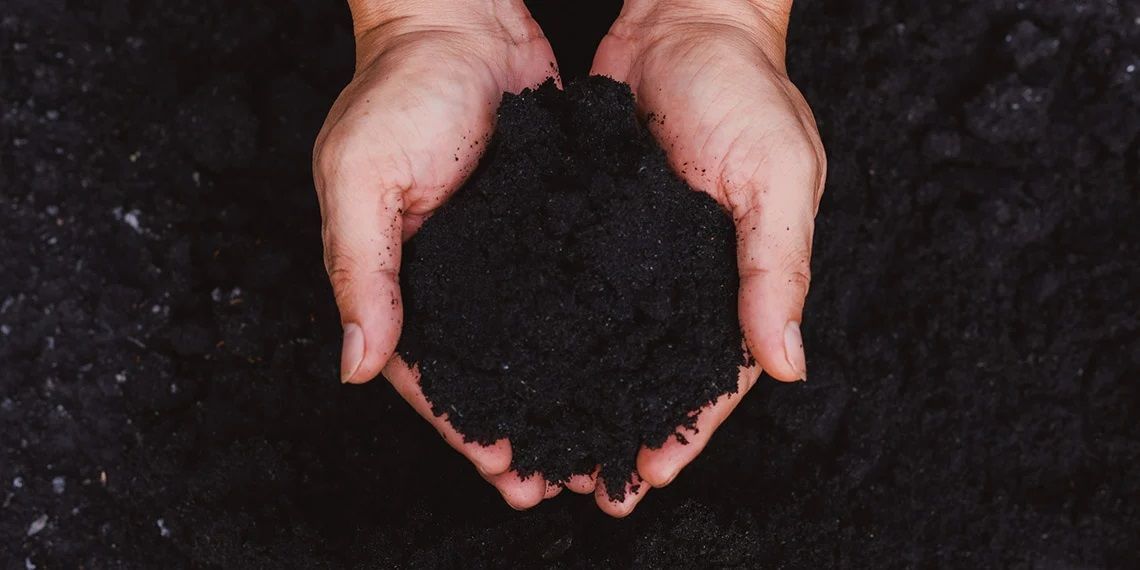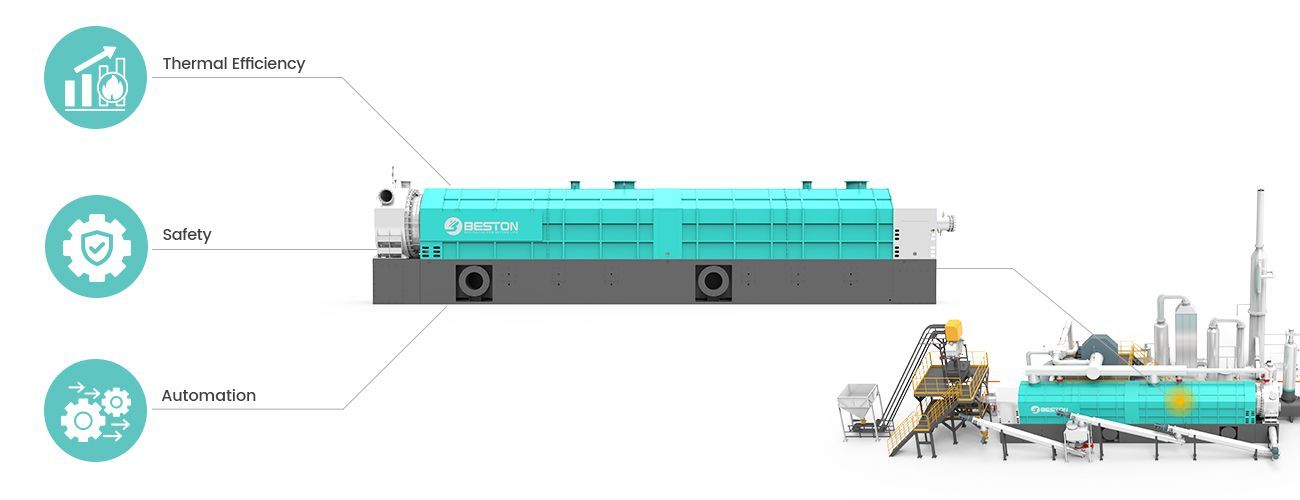Comparison of Carbon Footprints: Natural Biodecomposition vs. Charcoal Production
New Paragraph
The environmental impact of organic waste management has gained significant attention, particularly regarding carbon emissions. When biomass is left to naturally decompose, it releases carbon dioxide and methane, both potent greenhouse gases. Alternatively, using a biomass pyrolysis plant for charcoal production converts organic matter into biochar, offering a different carbon trajectory. This article explores the carbon footprints of natural biodecomposition versus charcoal production, comparing their long-term environmental implications.
Natural Biodecomposition Process
Natural biodecomposition refers to the gradual breakdown of organic matter by microbial activity. This process involves aerobic (oxygen-dependent) and anaerobic (oxygen-free) reactions, resulting in the release of gases like carbon dioxide (CO₂) and methane (CH₄). While these gases are naturally occurring, methane has a much higher global warming potential than carbon dioxide—approximately 25 times over a 100-year period.
Carbon Emissions in Decomposition
During aerobic decomposition, carbon in organic matter is oxidized, releasing CO₂ back into the atmosphere. This process is relatively fast but emits a large volume of carbon dioxide. In anaerobic conditions, such as landfills or areas with high moisture, organic matter decomposes without oxygen. This leads to methane production, which is a more severe contributor to global warming.
Although natural biodecomposition eventually leads to carbon sequestration in the soil, a significant portion of carbon is lost to the atmosphere in gaseous form. The carbon release during decomposition can take decades, contributing to the overall carbon load in the short term. While this process is essential for nutrient cycling, its carbon footprint is substantial, especially in landfills or unmanaged waste piles.
Limitations of Natural Decomposition
One of the major challenges of relying on natural decomposition is the uncontrolled release of methane, especially under anaerobic conditions. The global warming potential of methane makes natural biodecomposition less favorable when viewed through the lens of carbon emissions. Moreover, the carbon that is eventually sequestered into the soil is not permanent and can be re-released under different environmental conditions, such as soil disturbance or erosion.

Charcoal Production via Biomass Pyrolysis
Charcoal production using a biochar reactor for sale offers an alternative method of handling organic material. Pyrolysis is a thermochemical decomposition process that occurs in the absence of oxygen. The biomass is heated to high temperatures, causing it to break down into solid biochar, liquid condensates, and syngas. The key distinction between pyrolysis and natural decomposition is the controlled environment that leads to minimal greenhouse gas emissions during the process.
Carbon Storage in Biochar
One of the primary environmental advantages of using a biomass pyrolysis plant is the potential for long-term carbon sequestration. When organic material is converted into biochar, a significant portion of the carbon is stabilized within the solid biochar structure. Unlike the carbon from natural decomposition, biochar’s carbon remains locked in for centuries when applied to soils, effectively preventing its re-release into the atmosphere.
This stable form of carbon makes charcoal production an attractive option for carbon mitigation strategies. By converting organic waste into biochar rather than allowing it to decompose naturally, we can reduce the overall carbon footprint while creating a valuable soil amendment.
Reduced Methane Emissions
In contrast to natural biodecomposition, pyrolysis significantly reduces the emission of methane. The oxygen-free environment prevents anaerobic reactions, eliminating the primary source of methane production. As methane is a highly potent greenhouse gas, reducing its emission is a critical factor in lowering the carbon footprint of biomass waste management. Additionally, the pyrolysis process produces syngas, which can be captured and used as a renewable energy source, further offsetting fossil fuel-based energy use.
Energy Efficiency and By-Products
Another critical comparison between natural biodecomposition and charcoal production lies in energy utilization. Natural biodecomposition does not yield any immediate energy benefits. In fact, methane from decomposition can sometimes be captured for energy generation in landfills, but this is often inefficient.
In contrast, a biomass pyrolysis plant generates by-products such as syngas and bio-oil, which can be harnessed as renewable energy sources. These by-products can be used to fuel the pyrolysis process itself or for other industrial applications. The ability to generate usable energy from organic waste makes pyrolysis more energy-efficient and less dependent on external power sources compared to natural biodecomposition.
Application of Biochar in Agriculture
Beyond its role in carbon sequestration, biochar has additional benefits when applied to agricultural soils. It improves soil structure, increases water retention, and enhances nutrient availability, leading to more sustainable agricultural practices. This multipurpose application contributes indirectly to reducing the carbon footprint by enhancing soil health and reducing the need for chemical fertilizers.
Long-Term Carbon Sequestration vs. Short-Term Release
The major differentiator between natural biodecomposition and charcoal production lies in the timeline of carbon release and sequestration. Natural decomposition leads to the rapid release of carbon back into the atmosphere, particularly in the form of CO₂ and CH₄. Even when carbon is sequestered in the soil, it is subject to potential re-release due to environmental factors.
On the other hand, the biochar produced by a biomass pyrolysis plant represents a form of carbon that is largely inert and resistant to breakdown. This allows for long-term carbon storage in soils, offering a much more stable and enduring form of sequestration. The stability of biochar means that the carbon footprint of charcoal production is significantly lower than that of natural biodecomposition over extended periods.
Economic and Environmental Implications
The environmental advantages of using a biomass pyrolysis plant for charcoal production are clear, but the economic implications also deserve attention. While the initial investment in a pyrolysis system may be higher than allowing organic matter to decompose naturally, the long-term benefits—both environmental and economic—make pyrolysis a compelling option. Biochar can be marketed as a soil amendment, offering an additional revenue stream, while the by-products of the process can be utilized as renewable energy sources.
Moreover, as carbon credits and carbon trading become more prominent in global markets, businesses and governments that adopt biomass pyrolysis technology could benefit from financial incentives aimed at reducing carbon emissions. These mechanisms make charcoal production not only environmentally sustainable but also economically viable in the long term.
Conclusion
When comparing the carbon footprints of natural biodecomposition and charcoal production, the latter presents a far more sustainable solution. A biomass pyrolysis plant offers controlled carbon sequestration, reduced methane emissions, and the potential for renewable energy generation. In contrast, natural biodecomposition, while part of the earth’s ecological cycle, results in substantial greenhouse gas emissions in the short term and presents limited opportunities for long-term carbon storage. By adopting pyrolysis technologies, industries and governments can take proactive steps to reduce their carbon footprints while contributing to a more sustainable future.



